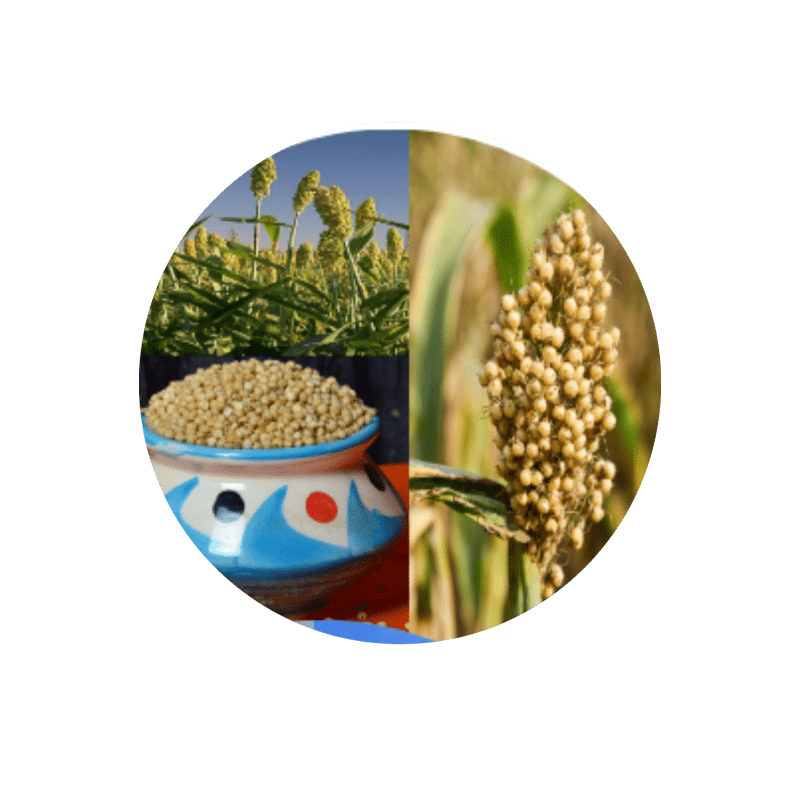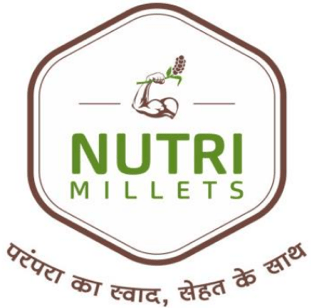
History and Story of Millets
Millets are traditional grains, grown and consumed in the Indian subcontinent from the past more than 5000 years. Reference of Millets have been found in old ancient texts of Yajurveda. References of foxtail millet (priyangava), Barnyard millet (aanava) and black finger millet (shyaamaka), are mentioned. Most of millet crops are native of India and are popularly known as Nutri-cereals as they provide most of the nutrients required for normal functioning of human body. Millets are nutri cereals comprising of sorgum, pearl millet, finger millet (Major millets) foxtail, little, kodo, proso and barnyard millet (minor millets). These are one of the oldest foods known to humanity.
Millets Production in India


MAJOR AND MINOR MILLETS
Millets are classified into Major Millets and Minor Millets based on their grain size. Pseudo millets are
nutritionally similar and used in similar ways as that of millets.
Major Millets
• Sorghum (Jowar)
• Pearl Millet (Bajra)
• Finger Millet (Ragi)
• Foxtail millet (Kakum)
• Kodo millets (Kodon)
• Barnyard millet (Sanwa)
• Little millet (Kutki/Shavan)
• Proso millet (Chenna/Barri)
Pseudo Millets
Minor Millets
• Amaranth (Ramdana/ Rajgira)
• Buckwheat (Kuttu)
MAJOR MILLETS

SORGHUM - JOWAR
• Improves digestion
• It fights against free radicals
• Boosts immunity
• Improves heart health
• Rich source of protein
• Controls blood sugar level
PEARL MILLET - BAJRA
• Reduces Blood Glucose Levels
• Stabilizes Cholesterol levels in the body
• Treats iron deficiency Anaemia
• Aids in weight loss
• Protects Gut Health
• Protects bone health


FINGER MILLET – RAGI
• Rich in calcium
• Best semi-solid foods for kids
• Rich source of fiber
• Best food for diabetes and cooling the body
• Increases lactation
• Boosts brain
MINOR MILLETS
FOXTAIL MILLET
• It is high in carbohydrates.
• It has double quantity of protein content compared to rice.
• It contains minerals such as copper & iron.
• It provides a host of nutrients, has a sweet nutty flavour
and is considered to be one of the most digestible and
non – allergic grains

KODO MILLET
• It has high protein content (11%), low fat (4.2%) and very high fibre content (14.3%).
• Rich in B vitamins especially niacin, pyridoxin and folic acid as well as the minerals such as calcium, iron, potassium, magnesium and zinc.
• It contains a high amount of lecithin and is an excellent for strengthening the nervous system.

BARNYARD MILLET
• It is the richest source of crude fiber and iron.
• Its grains possess other functional constituents i.e.,
Gamma amino butyric acid (GABA) and Beta – glucan,
used as antioxidants and in reducing blood lipid levels.

LITTLE MILLET
• It is smaller than other millets.
• It is high in iron content.
• It has high antioxidant activities.
• It contains about 38% of dietary fiber.

PROSO MILLET
• It contains the highest amount of proteins (12.5%).
• It has significant amounts of carbohydrate and fatty acids.
• It is cheaper source of manganese
• It contains high amounts of calcium
• It reduces cholesterol levels

Categories
- Download (1)
- Fasting Items (2)
- Lunch / Dinner (1)
- Millet Authors (6)
- Namkeen (1)
- Snacks (3)
- Sweet (2)
More Recipes
PSEUDO MILLETS
AMARANTH
• High protein content (13-14%) and a carrier of lysine
• Consists of 6 to 9% of oil
• Amaranth oil contains approximately 77% unsaturated fatty acids
• High in iron, magnesium, phosphorus, and potassium
• Have cancer

BUCKWHEAT
• It contains protein 13-15% protein and rich in the amino acid lysine.
• Rich in carbohydrates (mainly starch).
• Contains vitamins B1, C and E.
• Rich in polyunsaturated essential fatty acids, such as
linoleic acid.
• Contains higher levels of zinc, copper, and manganese
• High in soluble fibre.








